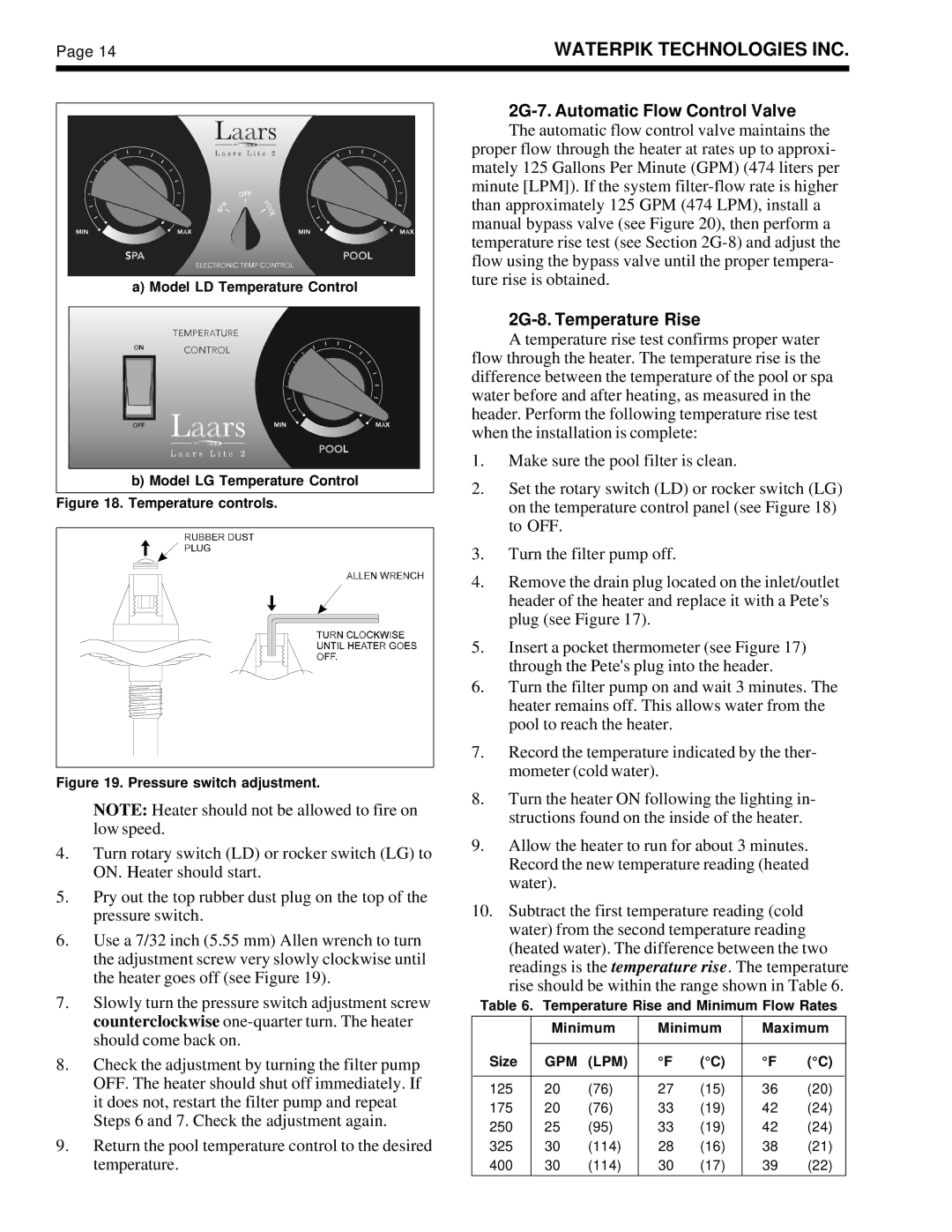LG, LD specifications
Laarsen Associates is a reputable engineering and consulting firm known for its innovative solutions in the field of energy and environmental management. Among its notable offerings are the LG and LD series of products, designed to optimize energy efficiency and reduce environmental impact in various applications.The LG series focuses on providing high-performance tools for efficient energy management in commercial settings. These tools are engineered to integrate seamlessly into existing infrastructures, allowing businesses to monitor, control, and optimize their energy consumption effectively. One of the main features of the LG series is its user-friendly interface, which provides real-time data on energy usage, enabling users to make informed decisions quickly. Furthermore, the enhanced connectivity options facilitate remote access, allowing users to manage their systems from anywhere, significantly improving flexibility and response times.
On the other hand, the LD series is tailored for industrial applications, emphasizing durability and robust performance. The LD products are designed to withstand the harshest environments while maintaining consistent efficiency. Their advanced monitoring systems provide detailed insights into energy consumption patterns, allowing for predictive maintenance and reduced operational costs. Key characteristics of the LD series include high reliability, modular design, and adaptive technologies that can be customized to suit specific industrial requirements.
Both series employ cutting-edge technologies to achieve optimal performance. Smart sensors collect real-time data, which is processed using advanced algorithms to deliver actionable insights. These insights can lead to optimized processes, reduced energy wastage, and enhanced sustainability measures. Moreover, the integration of IoT capabilities allows for smarter energy systems that adapt in real time to changing conditions.
Sustainability is at the core of Laarsen Associates’ offerings. Both the LG and LD series are designed with a commitment to reducing carbon footprints and complying with global standards for environmental protection. Their features not only promote energy efficiency but also support clients in achieving their sustainability goals.
In conclusion, Laarsen Associates’ LG and LD series represent the forefront of energy management and environmental solutions. With their combination of user-centric design, advanced technology, and commitment to sustainability, these products pave the way for businesses and industries to navigate modern energy challenges effectively.

